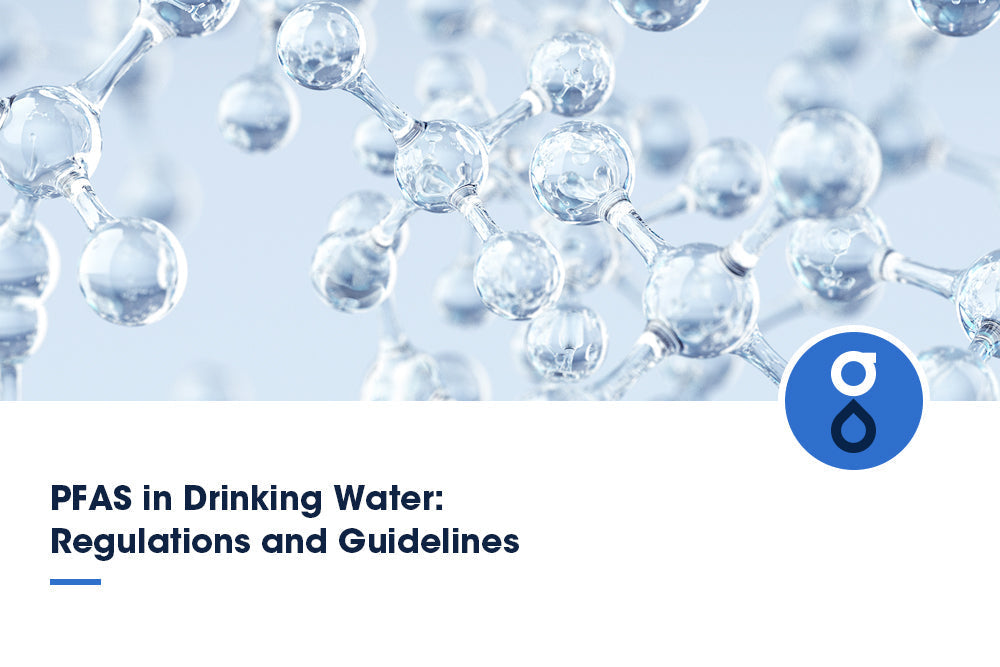Table of Contents:
Definition of microplastics
Overview of current research
Types of plastic debris found in freshwater environments
Solutions to reduce microplastic pollution in freshwater
FAQs
Conclusion
Microplastics, tiny plastic particles less than 5 mm in size, are an emerging environmental concern as they accumulate in oceans, lakes, and rivers worldwide. This blog post will provide an overview of microplastic pollution in freshwater environments, including sources, consequences, current research, and potential solutions. So, please grab a cup of coffee and get ready to learn about the impact of microplastic pollution in our freshwater ecosystems and what's next in the fight against it.
Definition of microplastics

Microplastics are tiny plastic fragments or fibers less than 5 mm in size. They may be manufactured as tiny particles, such as microbeads added to health and beauty products. Or, they can form when larger plastic debris breaks down into smaller pieces in the environment due to factors like UV radiation and mechanical wear.
Sources of microplastic pollution
Microplastics originate from a variety of sources:
- Synthetic clothing fibers shed during laundering enter wastewater streams.
- Vehicle tires deteriorate and release rubber particles as cars drive.
- Plastic pellets used as industrial feedstock enter waterways through spills and other accidents.
- Microbeads from personal care products like face wash and toothpaste wash down bathroom drains.
- Plastic trash on land and in rivers degrades into microplastics over time.
- Fishing gear loses fibers and fragments that accumulate in the water.
Consequences of microplastics in freshwater
These tiny plastic particles significantly impact the delicate balance of our aquatic environments. The effects on ecosystems are far-reaching, as microplastics can infiltrate the food web, causing harm to both plants and animals. Fish and other organisms mistakenly consume microplastics, leading to internal damage and compromised health.
Additionally, microplastics can alter the water chemistry and disrupt the natural flow of nutrients, affecting these ecosystems' overall biodiversity and stability. Furthermore, the presence of microplastics poses human health risks. When we consume fish or other aquatic organisms that have ingested microplastics, we may also be exposed to harmful chemicals and toxins.
Overview of current research
Recent studies are revealing the scope of microplastic pollution in freshwater and the effects on ecosystems:
Plastic particles in drinking water

According to some research, over 80% of tap water samples from around the world contained microplastics, with an average of 5.45 plastic particles per liter. Thus, there's growing concern about plastic particles in drinking water samples. Plastic pollution is a serious issue that poses health risks to humans. Research has shown that these tiny particles can leach harmful chemicals into our bodies, leading to various health problems. To address this issue, filtration systems have become more prevalent in households and public water supplies. These systems can effectively remove microplastics and other contaminants, ensuring cleaner and safer drinking water.
Concentrations of microplastics in aquatic environments
Lakes and rivers contain thousands of microplastic particles per square meter of surface water. Plastic concentrations downstream of wastewater treatment plants can be 10x higher than upstream. And you might be wondering how they measure this concentration.
Scientists use various methods to determine the amount of microplastics present in water samples. These methods include filtration, chemical digestion, and spectroscopy. By analyzing the concentration of microplastics, researchers can understand the extent of contamination and its potential impact on the ecosystem.
Effects on aquatic organisms and marine life

Fish like perch will reject food with high microplastic content but still ingest some particles. Exposure to microplastics reduces growth and reproductive health in water fleas. And mussels exposed to microplastics bioaccumulate the particles and show signs of inflammation. The above findings have revealed that microplastics significantly threaten the delicate balance of our aquatic ecosystems. Microplastics in water bodies can lead to marine ecosystem degradation, disrupting the natural food chain and biodiversity.
As smaller organisms ingest microplastics, they can accumulate in their bodies, leading to bioaccumulation risks. This means that when larger organisms consume these smaller ones, they eat the accumulated microplastics. This process continues up the food chain, ultimately affecting larger marine creatures and even humans who consume seafood.
Laboratory studies on the effects of microplastics
Laboratory studies have shown that ingesting microplastics can harm the health and well-being of aquatic organisms and marine life.
- Zebrafish embryos exposed to microplastics had developmental issues and higher mortality rates.
- Microplastics concentrate and transport pharmaceuticals, altering the blood chemistry of mussels.
- Even inert plastic particles impaired feeding and decreased energy reserves in water fleas.
These studies have focused on understanding the effects of microplastic ingestion on various organisms. Ingestion studies have revealed that microplastics can accumulate in the digestive tracts of these organisms, leading to physical damage and impairing their ability to absorb nutrients properly.
Additionally, microplastics can release toxic chemicals that can further harm the microorganisms, causing inflammation, oxidative stress, and even DNA damage. The extent of microplastic toxicity varies depending on the particles' size, shape, and chemical composition. These laboratory studies provide valuable insights into the detrimental effects of microplastics on organisms, highlighting the urgent need for effective strategies to mitigate their impact on aquatic ecosystems.
Types of plastic debris found in freshwater environments
Single-use plastics

Single-use plastics, such as plastic bags, straws, and water bottles, contribute significantly to plastic waste in the environment. By opting for reusable alternatives, like cloth bags, metal straws, and refillable water bottles, you can help minimize the amount of plastic waste in rivers, lakes, and other freshwater sources.
Proper plastic waste management prevents microplastics from entering our water systems. When plastic waste is not disposed of properly, it can break down into tiny particles that eventually find their way into freshwater ecosystems.
Plastic fragments and pieces
Plastic fragments and pieces, known as microplastics, have a significant environmental impact on freshwater ecosystems. They come from various sources, including the breakdown of larger plastic items and the shedding of microfibers from clothing.
Unfortunately, microplastics cannot be effectively removed by traditional filtration systems. They easily slip through the pores of the filters and end up in our waterways, posing a threat to aquatic life and potentially even human health. As we continue to study the effects of microplastics, it is crucial to develop advanced filtration technologies that can effectively remove these harmful particles from our freshwater sources.
Larger plastics and marine debris
Larger plastics and marine debris, such as discarded fishing nets and plastic bottles, contribute to the growing problem of ocean pollution. These items pose a significant threat to marine life and ecosystems. When these larger plastics enter the ocean, they can entangle marine animals, causing injury or death.
Additionally, marine debris can be mistaken for food by marine species, leading to ingestion and digestive issues. The problem is further exacerbated by the widespread use of single-use plastics, which are often not properly disposed of and end up in the ocean.
Toxic chemicals associated with plastics
You may not know that: flame retardants, plasticizers, and antimicrobials leach out of plastic materials. And pesticides like DDT and PCBs adsorb onto the surface of microplastics. Moreover, these toxic chemicals can then enter the food chain, affecting aquatic organisms and humans who rely on freshwater resources.
Solutions to reduce microplastic pollution in freshwater
Implementing effective filtration systems
Reverse osmosis system can actively remove these harmful particles from the water. These systems work by trapping microplastics and preventing them from entering freshwater sources. The filters can be designed to target specific sizes and types of microplastics, effectively reducing their presence in the water. Regular maintenance and monitoring of these filtration systems are essential to ensure optimal performance.
Promoting sustainable packaging and manufacturing practices

By choosing sustainable packaging and manufacturing practices, you can help minimize the impact of plastic waste on our freshwater ecosystems. When you opt for sustainable packaging, such as biodegradable or recyclable materials, you reduce the amount of plastic waste in our rivers, lakes, and streams. Additionally, supporting manufacturers that prioritize sustainable practices means fewer harmful chemicals and pollutants are released into our waterways during production.
Encouraging responsible waste management
To ensure responsible waste management, you should prioritize recycling and composting to minimize the amount of waste in landfills. Recycling is an essential step in reducing waste because it allows the reusing and repurposing of materials instead of being thrown away. By separating recyclable items such as paper, plastic, glass, and metal from your regular trash, you can help conserve resources and reduce the need for new materials to be produced.
Composting is another effective way to manage waste responsibly. By composting organic materials like food scraps and yard waste, you can create nutrient-rich soil that can be used to fertilize plants. This reduces the amount of waste that goes to landfills and provides a sustainable and natural solution for gardening and farming.
Raising awareness and education on microplastic pollution

By understanding the impact of microplastics on freshwater ecosystems, you can make informed choices in your daily life to reduce their presence. Start by learning about the different sources of microplastics, such as synthetic clothing fibers, plastic packaging, and personal care products.
Share this knowledge with your friends, family, and community to create a ripple effect of awareness. Additionally, support organizations and campaigns that work towards combating microplastic pollution in freshwater. Engage in discussions, attend workshops, and participate in clean-up initiatives to actively contribute to the cause. Together, we can safeguard our water sources and ensure a healthier environment for future generations.
FAQs
Can microplastics be filtered out of freshwater sources like lakes or rivers?
Yes, it is. Different filtration methods are used, but their effectiveness varies. It's important to consider the impact on the ecosystem when implementing these methods.
Can wastewater treatment remove microplastics?
Upgrading wastewater plants with membranes and filters can capture over 90% of microplastics, but many facilities need such advanced systems.
Conclusion
Microplastic pollution is becoming ubiquitous in freshwater environments, from the Great Lakes to small mountain streams. Their small size allows microplastics to infiltrate aquatic food webs and drinking water supplies. Reducing single-use plastics, improving waste management, developing natural alternatives, and cleaning up pollution is crucial to tackling this emerging issue. Ongoing research and policy initiatives can help limit the release and spread of microplastics to protect water quality and aquatic life worldwide.
















